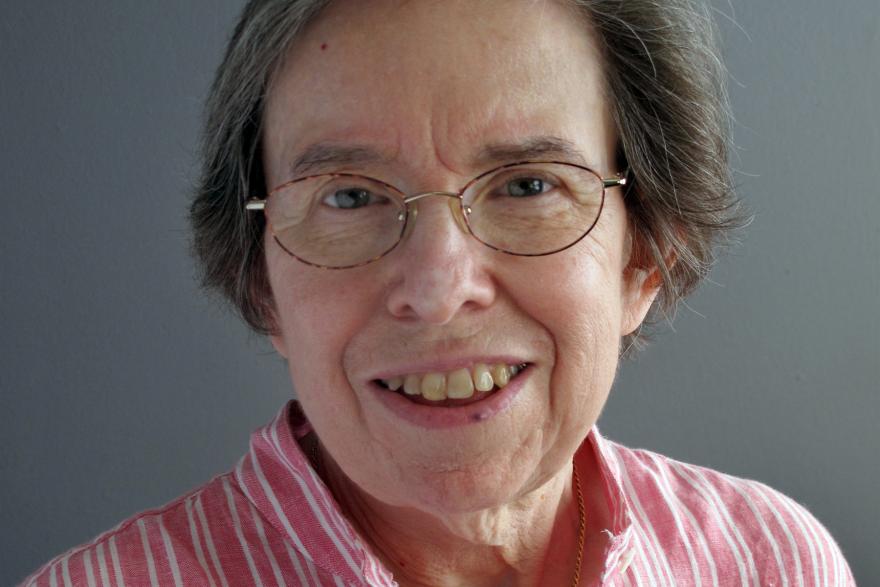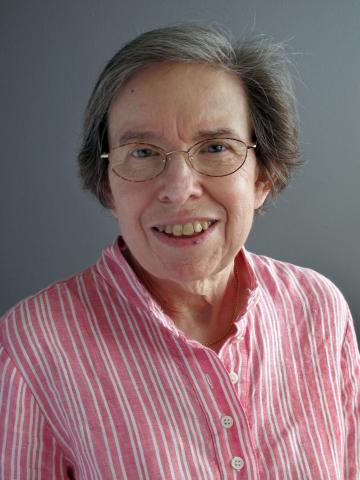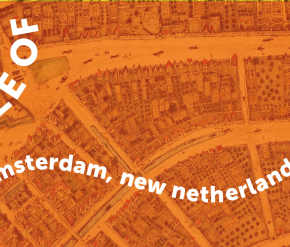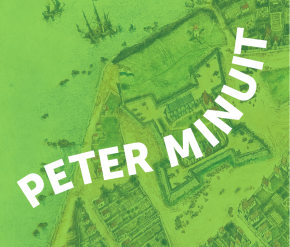Dr. Joyce Goodfriend


Dr. Joyce Goodfriend is a prize-winning historian of early America whose scholarship focuses on New Amsterdam and seventeenth-and eighteenth-century New York City. She is the author of Before the Melting Pot: Society and Culture in Colonial New York City 1664-1730 (Princeton University Press, 1992) and Who Should Rule at Home? Confronting the Elite in British New York City (Cornell University Press, 2017) and the editor of Revisiting New Netherland: Perspectives on Early Dutch America (Brill, 2005). She has presented her research on early New Yorkers at conferences across the United States as well as in the Netherlands, England and France, and in scores of published essays and articles
Why did Jews migrate to New Amsterdam between 1654 and 1657? Where did they come from and what was their background?
People of the Jewish faith initially reached New Amsterdam in 1654. First to come were a few individuals who left Amsterdam in search of opportunities for trade in the new American port. One of these men was Asser Levy, an Ashkenazic Jew from Vilna who had moved to Amsterdam. Ashkenazic Jews originated in German lands.
Not long after the arrival of these first Jews a ship carrying 23 Jewish men, women, and children sailed into New Amsterdam harbor. The passengers were Sephardic Jews, people with roots in Spain, who were fleeing Brazil, a Dutch colony that had just been seized by the Portuguese. Fearing the worst from their new Catholic rulers, these Sephardim managed to escape with their lives but in the turmoil lost their property in Recife, Brazil, where they had established a prosperous community under Dutch rule. They arrived in New Amsterdam as involuntary immigrants with no assets. Finding their economic prospects limited in the small city even as a few more European Jews trickled in, they eventually chose to depart for Amsterdam after several years stay.
Why did Petrus Stuyvesant, the Director-General of New Netherland, seek to prevent Jews from settling in the colony? Why was Stuyvesant overruled by the Dutch West India Company?
New Netherland’s final Director-General Petrus Stuyvesant was a staunch Calvinist who aimed to establish religious uniformity in New Amsterdam. To this end, he mandated that the city’s only place of public worship would be the Dutch Reformed Church. Stuyvesant’s strict definition of the ideal Protestant society meant that non-conforming Protestants such as Lutherans and Quakers, though promised liberty of conscience under Dutch rule, could only practice their faith in private.
In the case of the Jews, Stuyvesant proposed an even more extreme solution - expelling them from colony entirely. Stuyvesant’s animus toward Jews was rooted in his belief that they were “enemies and blasphemers of Christ,” a view reinforced by New Amsterdam’s Dutch Reformed minister Johannes Megapolensis, who described Jews as “godless rascals who are of no benefit to the country but look at everything for their own profit.” Stuyvesant’s determination to rid the colony of Jews also derived from his perception that New Amsterdam was becoming a religiously diverse society, an outcome likely to destabilize the whole Dutch colonial project in the Americas.
When Stuyvesant asked the Dutch West India Company for authorization to remove the Jews from New Amsterdam he was rebuffed. The Company Directors had received a petition from Amsterdam’s Jewish merchants that set forth a strong case for allowing Jews to remain in New Amsterdam. Refugee Jews had upheld Dutch interests in Brazil and as a result had suffered serious financial losses when the Portuguese took power. Given that opportunities for the refugees were limited in Holland, the Dutch West India Company concluded that these Jews were justified in attempting to make a new start in another Dutch colony - New Netherland. The Jews of Brazil had proven to be loyal subjects and, moreover, some of them were still indebted to the Dutch West India Company.
In light of these credible reasons, the Company Directors ordered Stuyvesant to admit Jews to New Netherland and to grant them “civil and political rights.” Although these instructions effectively curtailed Stuyvesant’s plan to deport Jews from New Amsterdam, the instructions did leave in place his policy of forbidding Jews from forming a synagogue or worshiping in public.
How did New Amsterdam’s Jews combat Stuyvesant’s anti-Jewish policies? What tactics did they use to overcome the restrictions placed on them?
Once he was forbidden by the Dutch West India Company from ejecting Jews from New Amsterdam, Stuyvesant shifted his strategy toward circumscribing their participation in the city’s economic and civic life. Stuyvesant’s proscriptions were intended to discourage Jews from settling permanently in New Netherland while extracting money from them in the meantime. Nonetheless the transplanted Jews began to trade with other colonists even though they remained under the surveillance of government officials. At times they willingly made concessions to the authorities as when they complied with the order to not keep their shops open on the Christian sabbath.
At other times, they petitioned for increased rights or made demands to accommodate their faith. Asser Levy applied for a permit to be a butcher in the colony, and requested and received an exemption to not slaughter hogs as it would be counter to his faith. He became the first kosher butcher in the colony, and one of two men granted such a license.
Initially Stuyvesant had attempted to block Jews from purchasing houses in New Amsterdam, likely to discourage them from planting roots in the community. Protests against this rule succeeded and Asser Levy among other Jews bought real estate.
New Amsterdam’s Jews were far from quiescent when they encountered rules that violated their presumed rights as citizens of the community. When faced with exorbitant taxation, they resisted by attempting to negotiate more wide-ranging trading privileges. They argued that the Company had given them permission along “with other inhabitants, to travel, live and traffic here and to enjoy the same liberty.” From this premise they built a strong case that New Amsterdam’s Jews should be able to acquire the Burgher Right. Such was the practice in Amsterdam they contended, adding that they “bear all Burgher burdens” in New Amsterdam. Stuyvesant conceded and admitted Jews as Burghers (citizens of the city) but he drew the line at allowing Jews to serve in the Burgher Guard (the militia). Again, Asser Levy protested and prevailed. He was permitted to perform guard duty in New Amsterdam along with other adult males.
Jews who sought equitable treatment in New Amsterdam placed their trust in the municipal court presided over by the Burgomasters where they appeared as both defendants and plaintiffs. The impartiality of the Burgomasters stood in contrast to Stuyvesant’s overt antisemitism.
New Amsterdam’s Jews for the most part acted to resolve their grievances through the existing colonial legal system by submitting petitions and bringing cases in the local court. Yet they did have recourse to another means to challenge the rules governing them in Stuyvesant’s New Amsterdam. They could and did express their concerns to leading Sephardic merchants in Amsterdam who had the ear of the Dutch West India Company. They expected their powerful coreligionists across the Atlantic to intercede on their behalf and in so doing curb Stuyvesant’s discriminatory policies.
How successful were New Amsterdam’s Jews in forming a religious community in the city? Were they able to found a synagogue and worship in public?
However much success individual Jews such as Asser Levy enjoyed in carving out a place in New Amsterdam, the city’s Jews collectively failed to amass sufficient power to topple the barriers to advancement erected by Stuyvesant.
The most significant example of the Director-General’s bias against Jews was his refusal to allow Jewish newcomers to create a synagogue or worship in public in New Amsterdam. When Stuyvesant informed the Dutch West India Company Directors in 1656 that the Jews “have many times requested of us the free and public exercise of their abominable religion, but this cannot be accorded them,” the Directors denied the Jewish immigrants the right to found a synagogue in New Amsterdam, but stipulated that they may “exercise in all quietness their religion within their houses.”
Given these constraints on their actions, New Amsterdam’s Jews improvised as best they could in fashioning a prototype of a Jewish religious community. In 1655 representatives of the group successfully petitioned “on behalf of the others” to be allowed to “purchase a burial place for their people.” Not only were the Jews determined to bury their fellows in ground made sacred according to their own traditions, they also insisted on abiding by their dietary laws. In 1660 Asser Levy and Moses Lucena were sworn in as Kosher butchers. However, it is likely that they were slaughtering cattle according to the requirements of Jewish law before this date.
They also came into possession of the fundamental requisite for Jewish worship - a Torah scroll. In 1655 a Sephardic merchant named Abraham de Lucena had been given a Torah scroll by the Amsterdam synagogue to take to New Amsterdam. This meant that New Amsterdam’s Jews now could join together on the Sabbath to enact age-old rituals in a private home using this Torah, although they were still not permitted to worship in public or build a synagogue in the colony
New Amsterdam’s Jews managed to obtain sacred space for a burial ground, licenses for Kosher butchers, a limited rights as merchants and citizens. However, this fledgling Jewish religious community did not exist for long. Most of New Amsterdam’s Jews chose to depart in the next few years, and the Torah scroll was returned to Amsterdam by 1663. Asser Levy therefore was an outlier in choosing to remain in the Dutch colony.
Why did most of the early Jewish settlers decide to leave New Amsterdam? Why did Asser Levy remain after the English captured what became New York City in 1664?
By the time Dutch rule ended in 1664 virtually all of New Amsterdam’s Jews had moved on to Amsterdam or elsewhere in the Atlantic world where they had connections. Encumbered with restrictions on their activities and subject to unreasonable fines and exactions they had concluded that there were too many obstacles to achieving material success or even economic security in Stuyvesant’s New Amsterdam to warrant remaining in the city. Even though Director-General Stuyvesant and Reformed minister Megapolensis had fostered anti-Jewish prejudice, unpleasant encounters with Christians do not seem to have provoked emigration nor is there any evidence of organized antisemitic actions that disturbed the communal life of Jews. The return of the Torah scrolls to Amsterdam prior to 1663 presaged the dissolution of New Amsterdam’s short-lived Jewish community.
Only Asser Levy and his wife persisted in the city after the English takeover in 1664. He remained there until his death in 1682. He had enjoyed success in various enterprises in New Netherland and he could
not expect to find greater opportunities in Amsterdam since he was not a Sephardic Jew. Moreover, as a Dutch speaker he had a better chance of integration into local society than his Portuguese-speaking coreligionists.
Petrus Stuyvesant’s adversarial stance ultimately convinced immigrant Jews that their prospects in New Amsterdam were dim. Yet their brief sojourn at the tip of Manhattan set the stage for the establishment and success of future Jewish communities in New York City.
Supporters
The People of New Amsterdam project is supported as part of the Dutch Culture USA program by the Consulate General of the Netherlands in New York.
The Frederick A.O. Schwarz Education Center is endowed by grants from The Thompson Family Foundation Fund, the F.A.O. Schwarz Family Foundation, the William Randolph Hearst Endowment, and other generous donors.




